 Bet You Didn’t Know: Watches
Bet You Didn’t Know: Watches

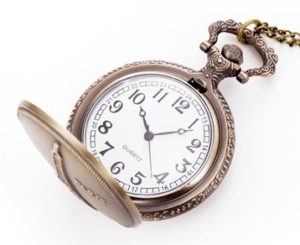
 If you were in the market for a watch in 1880, would you know where to get one? You would go to a store, right? Well, of course you could do that, but if you wanted one that didn’t cost that much, and that was a bit better than most of the store watches, you actually went to the train station to buy your watch!
If you were in the market for a watch in 1880, would you know where to get one? You would go to a store, right? Well, of course you could do that, but if you wanted one that didn’t cost that much, and that was a bit better than most of the store watches, you actually went to the train station to buy your watch! 

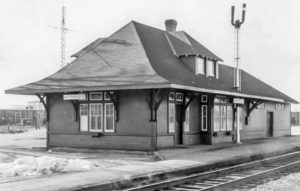
 Sound a bit funny? Well, for about five-hundred towns across the northern United States, that’s where the best watches were found. Why were the best watches found at the train station? The railroad company wasn’t selling the watches. Not at all. It was the telegraph operator who was!
Sound a bit funny? Well, for about five-hundred towns across the northern United States, that’s where the best watches were found. Why were the best watches found at the train station? The railroad company wasn’t selling the watches. Not at all. It was the telegraph operator who was! 

 Most of the time, the telegraph operator was located in the railroad station, because the telegraph lines followed the railroad tracks from town to town. The railroad tracks were usually the shortest distance between population centers, and the rights-of-way had already been secured for the rail lines.
Most of the time, the telegraph operator was located in the railroad station, because the telegraph lines followed the railroad tracks from town to town. The railroad tracks were usually the shortest distance between population centers, and the rights-of-way had already been secured for the rail lines. 

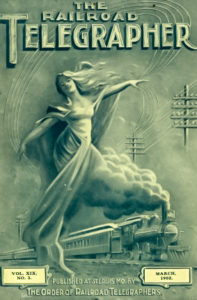
 Most of the station agents were also skilled telegraph operators, and that was the primary way that they communicated with the railroad. They would know when the trains had left the previous station, and when they were due at their next station.
Most of the station agents were also skilled telegraph operators, and that was the primary way that they communicated with the railroad. They would know when the trains had left the previous station, and when they were due at their next station. 

 And, it was the telegraph operator who had these watches. As a matter of fact, they sold more of them than almost all retail stores combined, for a period of about nine years.
And, it was the telegraph operator who had these watches. As a matter of fact, they sold more of them than almost all retail stores combined, for a period of about nine years. 

 This was all originally arranged by “Richard,” who was a telegraph operator himself. He was on-duty in the North Redwood, Minnesota train station one day, when a large load arrived from the East. It was a huge crate of pocket watches. And no one ever came to claim them.
This was all originally arranged by “Richard,” who was a telegraph operator himself. He was on-duty in the North Redwood, Minnesota train station one day, when a large load arrived from the East. It was a huge crate of pocket watches. And no one ever came to claim them. 

 So Richard sent a telegram to the manufacturer, and he asked them what they wanted him to do with the watches. The manufacturer didn’t want to pay for the freight back, so they wired Richard, and they asked him to see if he could sell them himself.
So Richard sent a telegram to the manufacturer, and he asked them what they wanted him to do with the watches. The manufacturer didn’t want to pay for the freight back, so they wired Richard, and they asked him to see if he could sell them himself. 

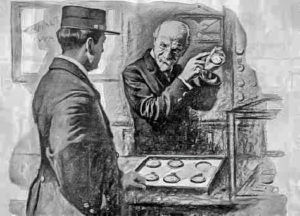
 So Richard did just that. He sent a wire to every telegraph and station agent in the system, asking them if they wanted an inexpensive, but good-quality pocket watch. He sold the entire case in less than two days, and he made quite a handsome profit.
So Richard did just that. He sent a wire to every telegraph and station agent in the system, asking them if they wanted an inexpensive, but good-quality pocket watch. He sold the entire case in less than two days, and he made quite a handsome profit. 

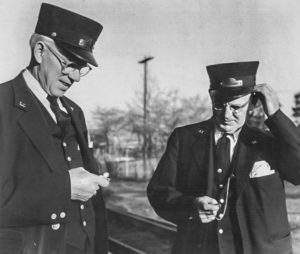
 That started it all, which was the very beginning of a future, gigantic nationwide business. Richard ordered more watches from the watch company, and he encouraged the telegraph operators to set up a display case in their stations, offering high-quality watches, for a value price, to all of the travelers.
That started it all, which was the very beginning of a future, gigantic nationwide business. Richard ordered more watches from the watch company, and he encouraged the telegraph operators to set up a display case in their stations, offering high-quality watches, for a value price, to all of the travelers. 

 And it worked! It didn’t take long for the word to spread, and before long, people other than travelers came to the train station to buy their watches.
And it worked! It didn’t take long for the word to spread, and before long, people other than travelers came to the train station to buy their watches. 

 Richard became so busy, that he had to hire a professional watchmaker to help him with the orders. That was Alvah. And the rest is history, as they say. The business took off, and it soon expanded to many other lines of dry-goods.
Richard became so busy, that he had to hire a professional watchmaker to help him with the orders. That was Alvah. And the rest is history, as they say. The business took off, and it soon expanded to many other lines of dry-goods. 

 Richard and Alvah eventually left the train station, and they moved their company to Chicago. And its headquarters is still right there today. YES, it is a little-known fact, that for a while in the 1880s, the biggest watch retailer in the country was at the train station.
Richard and Alvah eventually left the train station, and they moved their company to Chicago. And its headquarters is still right there today. YES, it is a little-known fact, that for a while in the 1880s, the biggest watch retailer in the country was at the train station. 

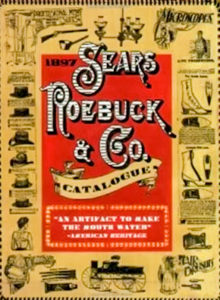
 And it all started with a telegraph operator, Richard Sears, and his partner, Alvah Roebuck! Up until 2017, you’d almost always find a Sears department store there. Bet you didn’t know, that’s how Sears got started!
And it all started with a telegraph operator, Richard Sears, and his partner, Alvah Roebuck! Up until 2017, you’d almost always find a Sears department store there. Bet you didn’t know, that’s how Sears got started! 
| multiple: Combined |
| listen: Combined | ||||||||||||||||

|
||||||||||||||||
| listen: Combined | ||||||||||||||||||||||

|
||||||||||||||||||||||
| listen: Combined | ||||||||||||||||||

|
||||||||||||||||||
| listen: Combined | ||||||||||||||||||||

|
||||||||||||||||||||
| listen: Combined | ||||||||||

|
||||||||||
| listen: Combined | ||||||||

|
||||||||
| listen: Combined | ||||||||||||

|
||||||||||||
| look: Combined | |||||||||||||||||||||

|
|||||||||||||||||||||
| look: Combined | |||||||

|
|||||||
| look: Combined | |||||||||||||||

|
|||||||||||||||
| look: Combined | |||||||||||||||

|
|||||||||||||||
| look: Combined | |||||||

|
|||||||
| look: Combined | |||||||||

|
|||||||||
 1. In the 1880s, the best place to shop for a good quality, low price watch was:
1. In the 1880s, the best place to shop for a good quality, low price watch was:
a) at the local department store
b) at a watchmaker’s shop
c) at the train station
 2. The person selling the watches was:
2. The person selling the watches was:
a) a store clerk
b) a telegraph operator
c) a watchmaker
 3. Why did Richard have the watches to sell?
3. Why did Richard have the watches to sell?
a) he ordered them from the watch factory
b) the manufacturer didn’t want to pay return freight costs
c) he made them himself
 4. Richard and his partner Alvah started:
4. Richard and his partner Alvah started:
a) the first watch business
b) a train station
c) Sears and Roebuck stores




















